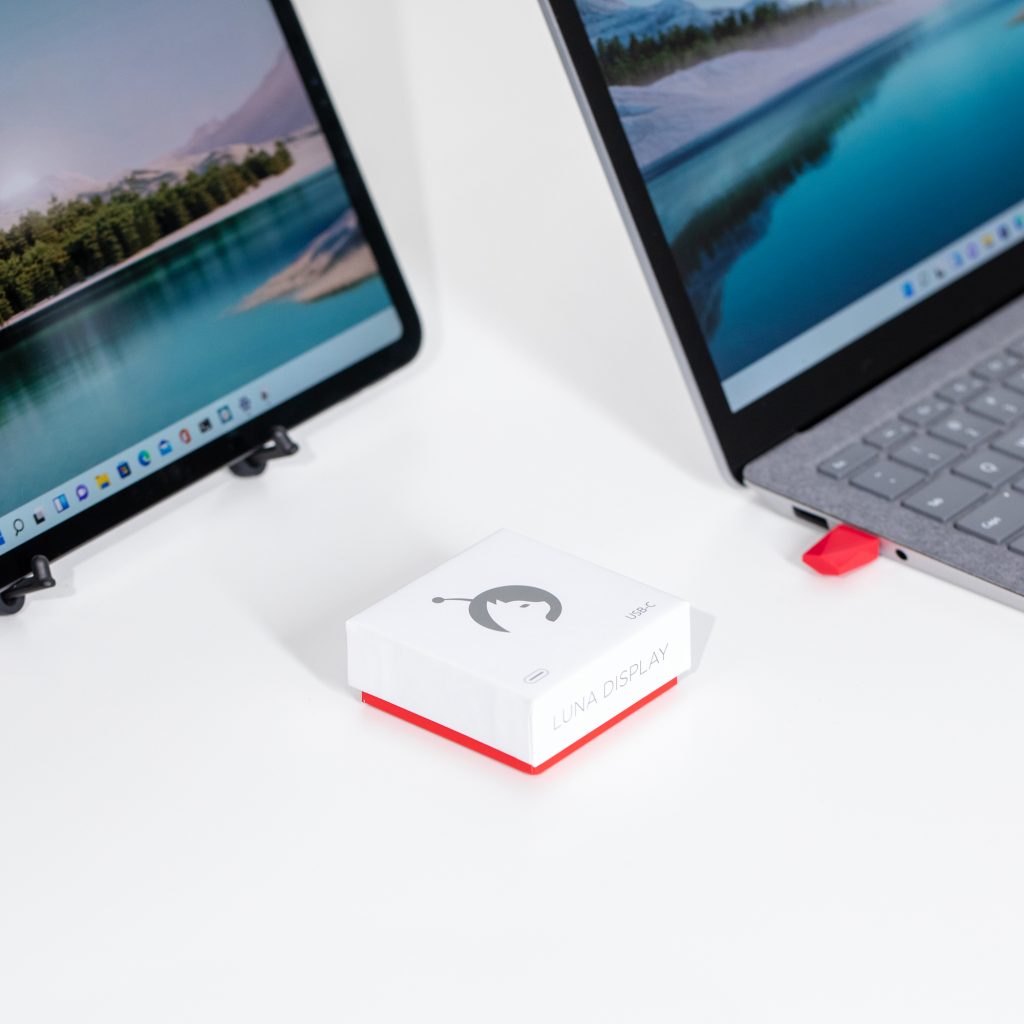Luna Display Versus Duet Display

level up your remote workflow
When considering on-the-go workspace solutions, Luna Display and Duet Display are two options to use your iPad as a second display.
Luna is a real hardware display. Software-simulated displays like Duet Displays are limited and offer an unreliable display experience.
The guide below outlines the benefits of a hardware solution so that you can make an informed decision for your workflow:
| LUNA DISPLAY | DUET DISPLAY | |
|---|---|---|
| Computer-to-iPad Mode | ✅ | ✅ |
| Computer-to-Mac Mode | ✅ | ❌ |
| Headless Mode | ✅ | ❌ |
| Full touch gestures and Apple Pencil support | ✅ | ✅ |
| Wireless connectivity | ✅ | Limited availability |
| Low latency | ✅ – 16ms latency | ❌ – 32 ms latency |
| Reliable performance across all programs | ✅ | ❌ |
| High-quality image | ✅ | ❌ |
| GPU acceleration | ✅ | Limited |
| Retina support | ✅ | Limited |
Device versatility with Luna Modes

Duet Display is limited to desktop-to-iPad setups. Luna Display offers a variety of workspace setups, including:
- Computer-to-iPad Mode: Seamlessly extend your desktop to your iPad, works with Mac or PC. Featuring full touch support and gestures.
- Computer-to-Mac Mode: Use any Mac as a second display — perfect for anyone with multiple Macs. It even works on older Mac models.
- Headless Mode: Looking for a powerful travel-friendly setup with your Mac mini? Headless Mode lets you use your Mac or iPad as the main display for Mac mini and Mac Pro.
Low latency means smoother performance
Duet Display uses traditional video playback technology that was designed for pre-recorded films, where real-time feedback isn’t an issue. But your workflow isn’t pre-recorded, and that’s why we built Luna Display with low latency for faster performance.
Luna runs on our proprietary display protocol called LIQUID, which was built to provide low-latency and high-resolution on WiFi networks.
LIQUID’S algorithm features our built-in Velocity Control, which analyzes WiFi network conditions dozens of times per second to balance image quality and latency. Luna typically sees latency of 16 to 32 milliseconds (ms) over WiFi.

True display recognition
Luna’s hardware component allows your desktop to recognize Luna as a real display. That means you’ll get robust and reliable performance every time you use Luna.
Duet Display relies on software that “tricks” your Mac into thinking a display is attached, causing glitchy and unreliable performance. This also puts Duet’s software at risk of being unsupported when your desktop releases future OS updates.

Full, native Retina resolutions
Luna Display can drive all iPads at the full, native Retina resolutions for Macs that support Retina mode.

Duet Display is limited to 1080p, which doesn’t necessarily fit the size of the iPad.
Complete GPU acceleration
Because your computer recognizes Luna as a true display, Luna is able to harness the raw power of your computer’s graphics card, allowing complete GPU acceleration across all apps. The result is an ultra-crisp picture and a perceptually-lossless display.
Mac computers are unable to recognize Duet as a true second display, so Duet gets inconsistent graphics acceleration and Metal GPU support. That’s like buying a car and only using half the engine.

